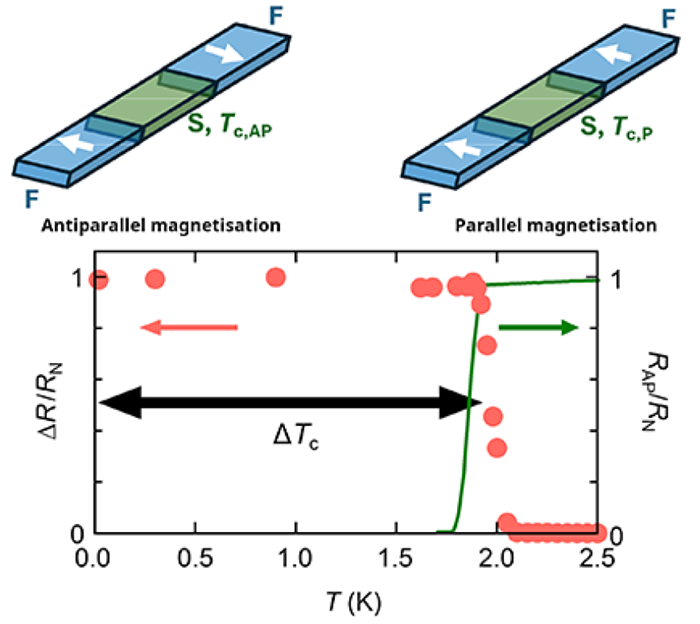The University of Jyväskylä in Finland has been part of an international cooperation that has discovered a mechanism to entirely suppress superconductivity in superconducting and ferromagnetic junctions. The study was published in Nature Communications.

Researchers recently realized the first de Gennes’ superconducting switch where superconductivity is completely suppressed. Image Credit: University of Jyväskylä
The findings are significant for the development of non-volatile superconducting random access memory, which might lead to more energy-efficient information and communication technologies.
Superconductivity is a state of matter that occurs in certain materials at low temperatures, characterized by zero electrical resistance below a specific critical temperature. A superconducting switch is a device designed to toggle this state on and off, much like a conventional electrical switch that controls current flow in a circuit.
De Gennes’ Superconducting Switch Showed the Way 60 Years Ago
In 1966, Pierre-Gilles de Gennes described a way to turn superconductivity on and off in a magnetic device. This featured a superconductor sandwiched between ferromagnetic insulators, with the net magnetic exchange field regulated by the magnetization orientation of the ferromagnetic layers.
When the magnetization of the ferromagnetic layers is aligned in parallel, the superconductor's critical temperature is suppressed. In contrast, if the magnetizations are antiparallel, the effects of the two ferromagnetic layers on the superconductivity tend to cancel out, allowing the critical temperature to remain higher.
Although these structures have demonstrated a sensitivity of the superconducting critical temperature to the magnetization orientations, the corresponding shifts in the critical temperature were lower than predicted.
Alberto Hijano, Postdoctoral Researcher, University of Jyväskylä
First Absolute Superconducting Switch
Scientists have recently demonstrated the first de Gennes superconducting switch capable of fully suppressing superconductivity. The device uses niobium (Nb) as the superconductor and europium sulfide (EuS) as the insulating ferromagnet.
A key element of the design is a thin gold layer inserted between the EuS and Nb. This gold layer plays a critical role by enhancing the strong proximity exchange field within the material, enabling the complete switching of superconductivity on and off.
“This achievement could pave the way for the development of non-volatile superconducting random access memory devices. The absolute superconducting switch would also save energy and could be used in low energy electronics to drastically reduce the energy consumption. The magnetic switch would eliminate the continuous heat load present in current thermal switches,” Hijano added.
The study is a partnership between the University of Cambridge, the University of the Basque Country, and the University of Jyväskylä.
Journal Reference:
Matsuki, H., et al. (2025) Realization of de Gennes’ absolute superconducting switch with a heavy metal interface. Nature Communications. doi.org/10.1038/s41467-025-61267-2